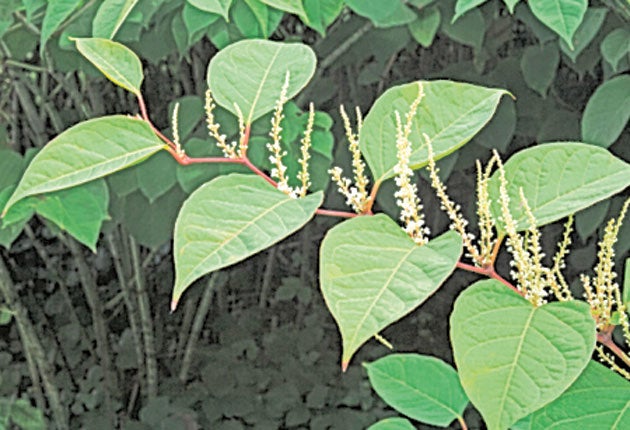Weeds, By Richard Mabey
Can-do plants that act like us

Support truly
independent journalism
Our mission is to deliver unbiased, fact-based reporting that holds power to account and exposes the truth.
Whether $5 or $50, every contribution counts.
Support us to deliver journalism without an agenda.

Louise Thomas
Editor
What is a weed? The snappiest of many possible definitions is a plant growing in the wrong place. Weeds are seen as troublesome, obnoxious and, above all, useless. They sabotage our best-laid plans, they rob our crops of rightful nourishment and they form impenetrable thickets of thorns, stings and burs. In short, they are a bad lot, and have been ever since the opening chapters of Genesis, when God kicked the sinning Adam and Eve out of the garden and into a wilderness of thorns and briars.
Yet, as the old herbalists knew, weeds have their virtues. Many are rather attractive; some of today's most persistent troublemakers, such as Japanese Knotweed and Giant Hogweed, were originally planted out for their exotic beauty. Others have made themselves useful as folk medicine, flavourings and foraged food. The burdock inspired Velcro. Shakespeare made good use of weed lore, and the poppy has long been a potent symbol of blood sacrifice.
Naturally, as Richard Mabey's collaborator on Bugs Britannica I am biased, but I think this is the best book on British wild flowers in a decade. Mabey is sympathetic to these "vegetable vagabonds", tattered ragamuffins of urban wastelands and broken earth. His lyrical, highly original and thought-provoking book winds along the back lanes of history as one man's crop becomes another's pest.
Each chapter takes its theme from a presiding plant: waybread, self-heal, love-in-idleness, gallant soldiers. Any society that admires resourcefulness, adaptability, even bare-faced cheek, should warm to the ways of weeds, "mobile, prolific, genetically diverse... using multiple strategies for getting their own way". It's curious that it took so long for us to realise, notes Mabey in a characteristic flash of insight, "that the species they most resemble is us"."
In the early Seventies, Mabey worked in an office overlooking the urban wastelands north of Heathrow Airport. Though this "ragged Arcadia" was the opposite of the pastoral idyll of landscape artists, it "pulsed with life", with "forests of noxious hemlock... Indian balsam smelling of lavatory cleaner but alive with insects, blanketing the thrown-out lager cans". The weeds seemed to straddle the divide between wild and cultivated, acceptable and unacceptable.
Take the fireweed or Rosebay Willowherb, once a rare flower of rocks and ancient walls, now, by some unexplained genetic hiccup, a denizen of man-made habitats. Its moment of glory came in the bombed out wreckage of wartime London when its fiery blossoms presided over the broken stones where human beings had lived.
But how did people see it? Was it a "thrilling... reminder of wildness that lay behind civilisation", as the writer Rose Macaulay suggested, or the start of a process of healing? Weeds, after all, are pioneers. With their quickfire splurges of seed they find bare ground, put down tiny roots, and flourish briefly before making way for other plants.
Mabey writes of a Scottish immigrant in Australia who delightedly found, and preserved, a thistle. Yet the plants such people brought with them have become the new-world weeds, "shock troops through which the colonial powers imposed their own economic priorities on foreign cultures". Meanwhile, foreign invaders impose their own priorities on us. It will cost £70 million to rid the Olympics site of its jungles of knotweed from Japan.
Weeds, Mabey suggests, are "the boundary breakers, the stateless minority, who remind us that life is not that tidy" and the wild is not confined to the far side of the garden wall. Read this quietly enthralling book and you will never again look at these most familiar plants in quite the same way.
Subscribe to Independent Premium to bookmark this article
Want to bookmark your favourite articles and stories to read or reference later? Start your Independent Premium subscription today.
Join our commenting forum
Join thought-provoking conversations, follow other Independent readers and see their replies
Comments